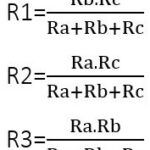What is LTE PMI?
Let me explain what PMI (Precoding Matrix Indicator) is in LTE. If you’re familiar with how LTE works, you know that it uses advanced technologies like MIMO (Multiple Input, Multiple Output) to increase network capacity and efficiency. PMI is an essential part of MIMO, especially when dealing with spatial multiplexing.
To start, PMI is a signaling value used to indicate the best precoding matrix to be applied at the transmitter in an LTE network. Precoding refers to the process where the transmitted signal is adjusted before being sent to ensure it arrives at the receiver with the least amount of interference. The precoding matrix essentially determines how the data is distributed across multiple antennas to achieve optimal signal quality and capacity.
In LTE networks, the goal is to transmit data over multiple antennas simultaneously in a way that maximizes throughput and minimizes interference. The PMI helps to choose the most suitable precoding matrix for this process based on feedback from the user equipment (UE).
Let’s break it down in simpler terms: in an LTE system, the base station (eNodeB) sends data to the user equipment (UE). Since there are multiple antennas involved, it’s crucial to know how to send the data through them in the most efficient way. The UE, after receiving the signal, sends feedback to the eNodeB about the current radio conditions. This feedback includes the PMI, which tells the eNodeB the best way to transmit the data using the available antennas.
Why is PMI so important? Well, by using PMI feedback, the eNodeB can adjust its transmission strategy to optimize the use of the wireless spectrum, resulting in better signal quality, higher data rates, and reduced interference. Without PMI, the network would struggle to use the available antennas effectively, leading to poor performance and lower user experience.
Here’s a quick overview of how it works:
- Precoding Matrix: A matrix that describes how the data is distributed across antennas.
- PMI Feedback: The UE sends feedback to the eNodeB about the best precoding matrix to use based on current conditions.
- Transmission Adjustment: The eNodeB uses the PMI to adjust the transmission strategy for optimal performance.
To make it even clearer, think of the PMI as a guide that helps the eNodeB decide the best way to send the data through multiple paths (antennas) to your device. This is particularly important in high-speed data applications, such as video streaming or online gaming, where low latency and high throughput are essential.
In previous articles, we discussed how LTE utilizes advanced technologies like MIMO to boost capacity and improve network performance. PMI is a critical part of this process, allowing LTE networks to optimize the use of their antennas and deliver a superior user experience, even in challenging environments.


